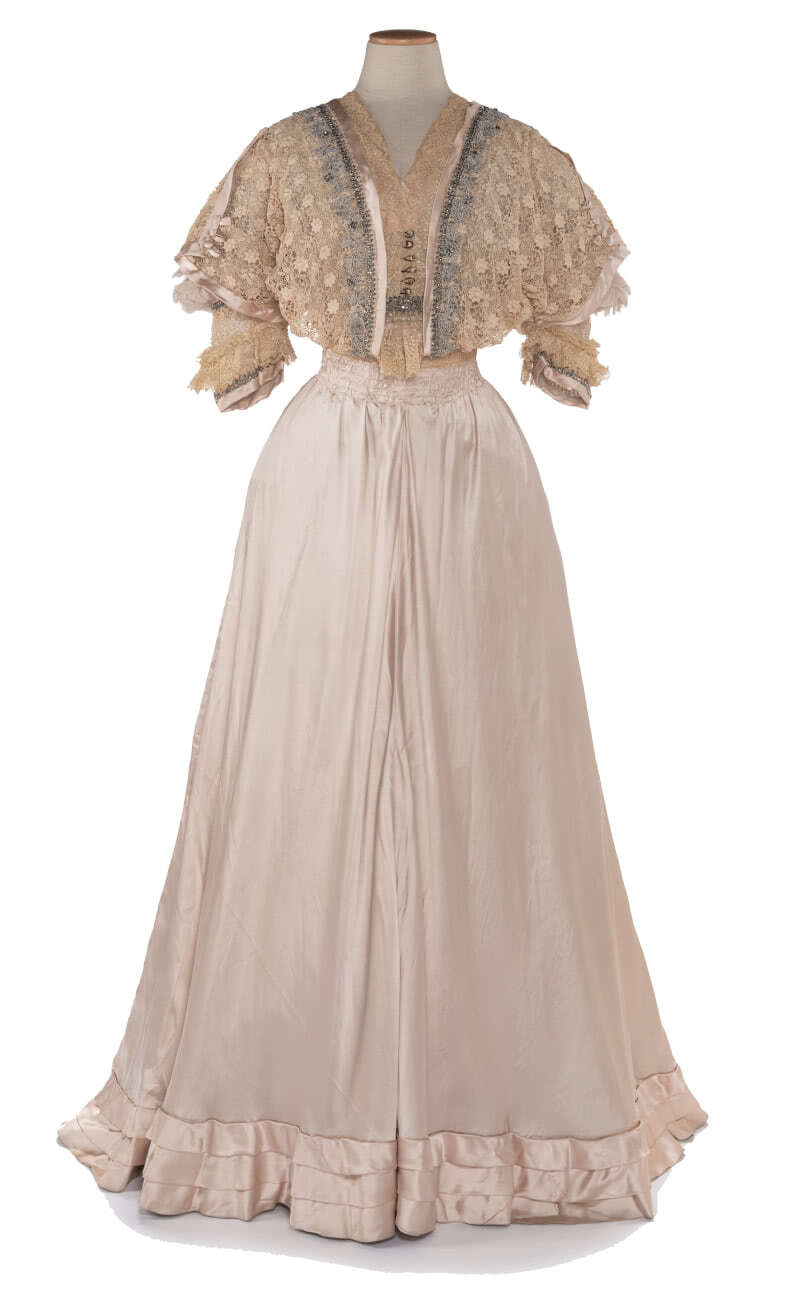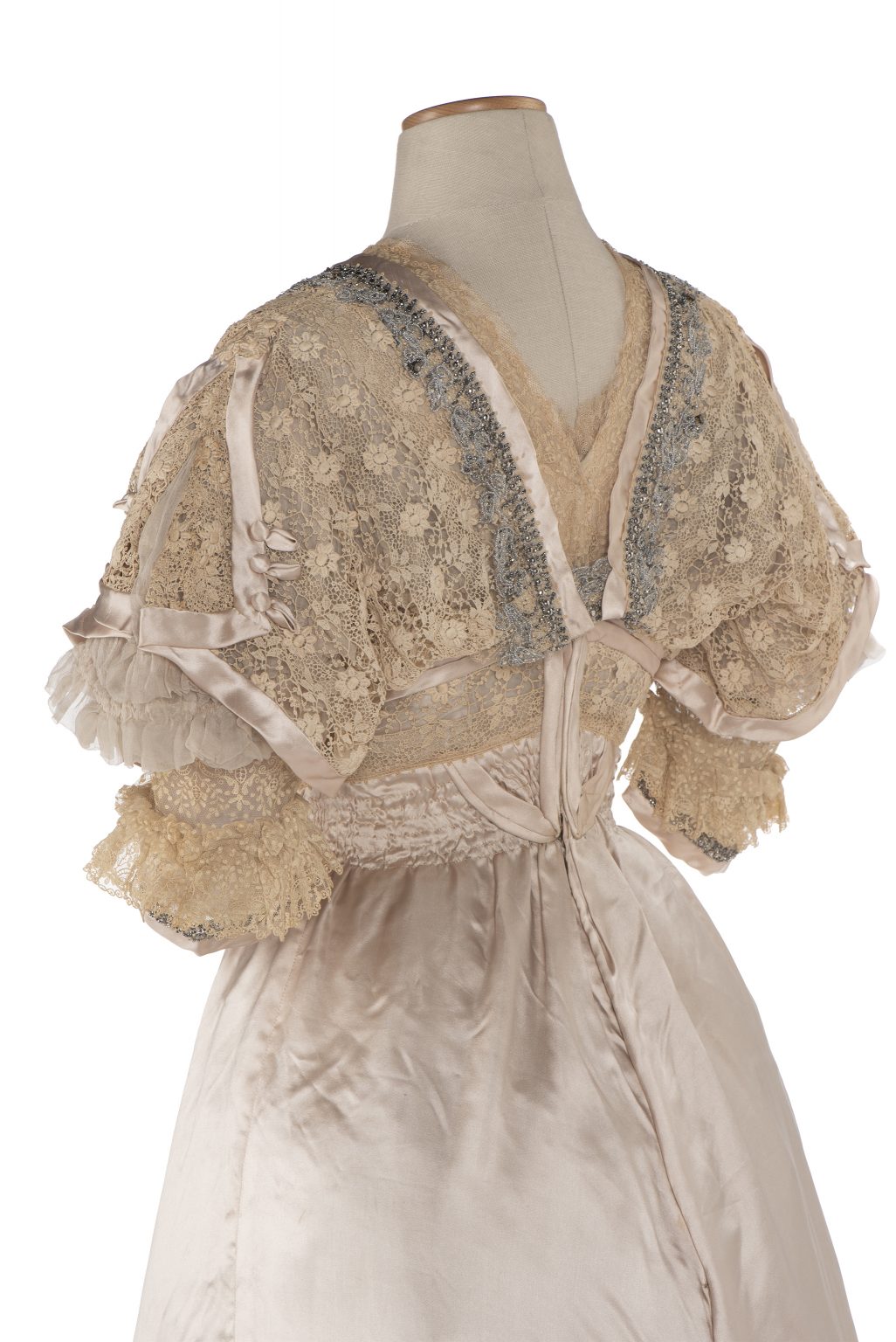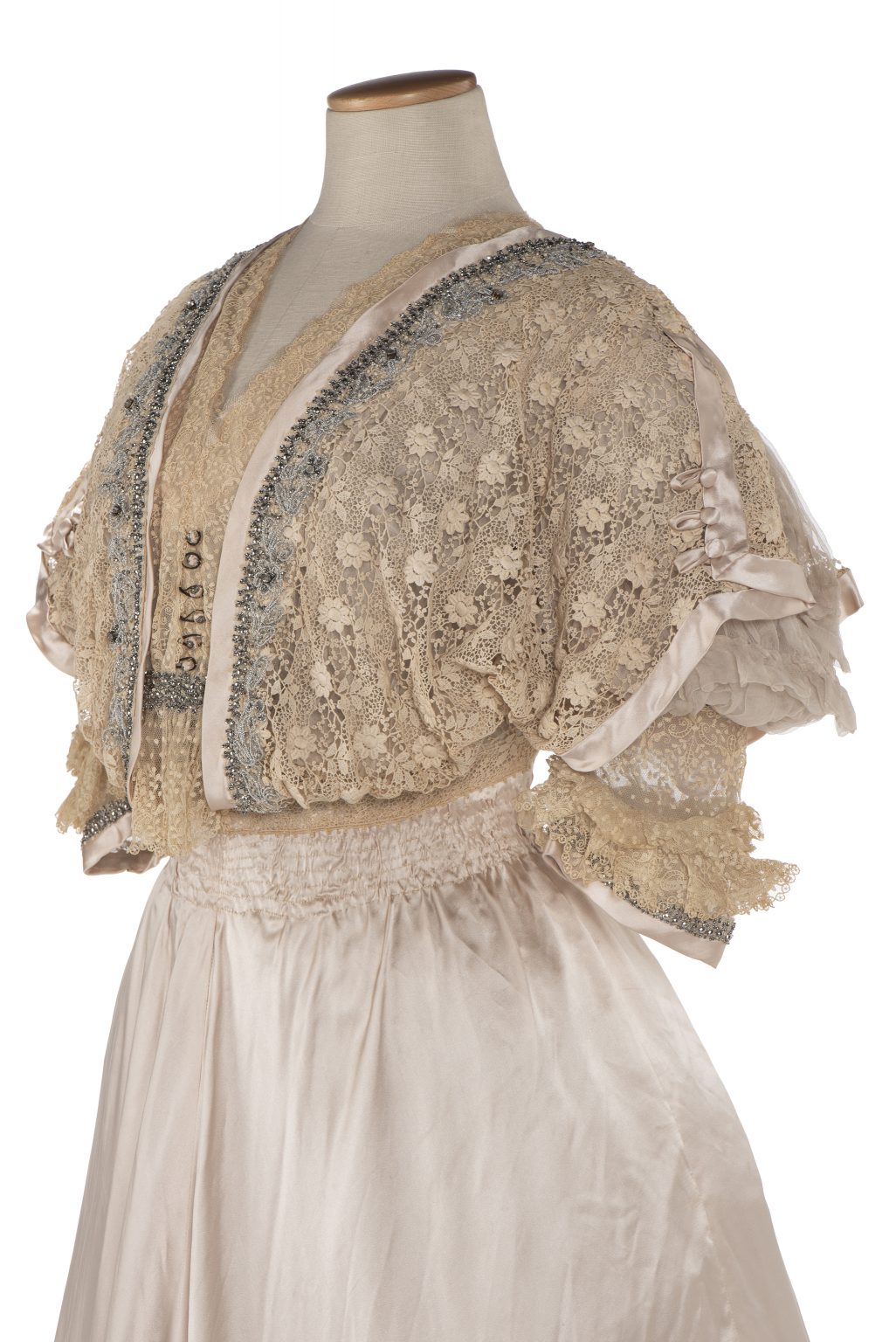
Dress 1907
Powder pink dress in silk satin and lace, decorated with embroidered tulle, made by A. Civilotti, Paris, Rome, circa 1907, Camilla Colombo Collection.
Details


Fashion
Between the end of the nineteenth and the beginning of the twentieth centuries women’s fashion abandoned the large volumes that had characterised the previous decades. The romantic silhouette of the mid- nineteenth century was slowly replaced by a more vertical and serpentine line close to the aesthetic canons of Art Nouveau. The large cage crinolines and
bustles were replaced by layers of fabric and linings trimmed with lace and flounces that added slight volume to the shape. Skirts widened towards the hemline and became flared. The corset, a woman’s inseparable companion for more than three centuries, was still present, but with a new shape that gave the body the so-called S-curve silhouette, lengthening the female figure and emphasising and accentuating the curves of the bosom and lower back. Soft blouses with wide sleeves that were tightly-fitting at the back and draped at the front, increasingly replaced the rigid boned bodices of previous fashions.
High, transparent collars in lace or silk, lightly boned with wire or celluloid, framed the neck during the day while ample décolletages were fashionable in the evening. Dresses were accompanied by elaborate hairstyles and the ubiquitous hat, decorated with extravagant floral compositions and fixed in place with long decorated hatpins. The most popular colours in this period were soft pastel shades, from antique pink to dove blue, and, although wool and cotton fabrics were now used for elegant day dresses, silk was still the undisputed favourite for evening dresses where it was often encrusted with lace and embroidery in a juxtaposition of layers and transparencies.
Technical info
Women
In Italy at the end of the 19th and the beginning of the 20th centuries a renewed interest in the country’s national heritage aimed to promote traditional artisan handicrafts. As a result, new artistic movements began to focus on the revival of the past and the revitalisation of traditional decorative arts, an area with a mainly female workforce. An example of this was the 1902 exhibition “Operosità femminile italiana” which was designed to be a showcase for products created by Italian women although it was predominantly a display of lace and embroidery. The concept that a woman's work should be as useful as
that of a man’s was spreading in this period and the Industrie Femminili Italiane (IFI) cooperative was founded in May 1903. Its mission was to trace the traditional skills of women workers, adapt them to modern taste and make them functional. From an early age, women were trained to become seamstresses, lacemakers, embroiderers or field workers, but despite the high
level of professionalism they acquired, wages were derisory and it was within the decorative arts and textile industry that the demand for women’s rights found fertile ground.
Rosa Genoni
At the beginning of the 20th century, Rosa Genoni believed it was necessary to develop an Italian fashion industry that was independent of the prevailing taste for French fashion and that would enhance the value of local craftsmanship. Born into a large, poor family, Rosa Genoni began working at the age of ten as a “piscinin” (all-round assistant) in a tailor's shop in Milan.
After a short apprenticeship in France she was hired by the Milanese fashion house H.Haardt et Fils where she became director and head designer in 1903.
This allowed her to propose her own designs alongside the copies of the French models. Genoni valued the artistic patrimony of her country and won the Grand Prix for Decorative Arts at the Milan Expo in 1906 with a collection inspired by the Renaissance. After participating in the international conference on the conditions of workers in Paris in 1884, Rosa became involved in socio- political initiatives for the improvement of the status of women workers, female emancipation and peace. Aware of the importance of education, she taught sewing and the history of fashion and design for many years at the Società
Umanitaria (Humanitarian Society) in Milan, whose mission it was to educate the underprivileged classes in a profession, and in 1928 she opened the first sewing school for female inmates at San Vittore prison.